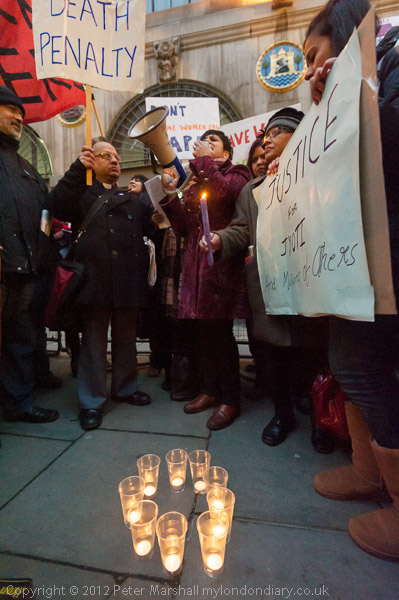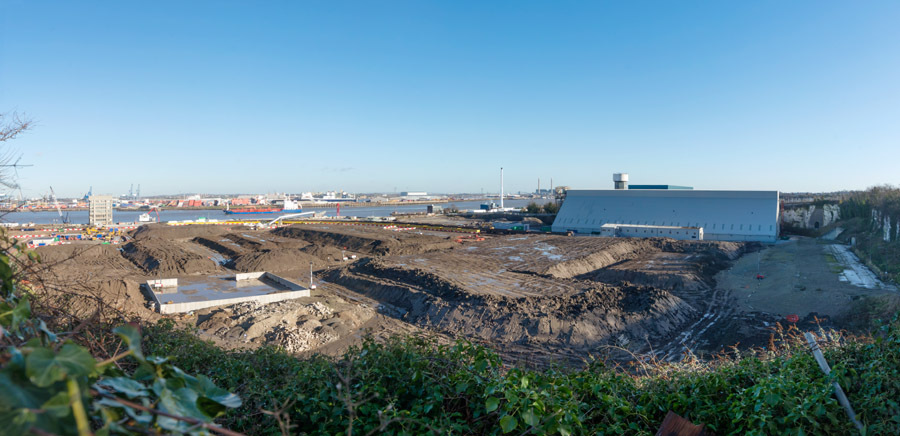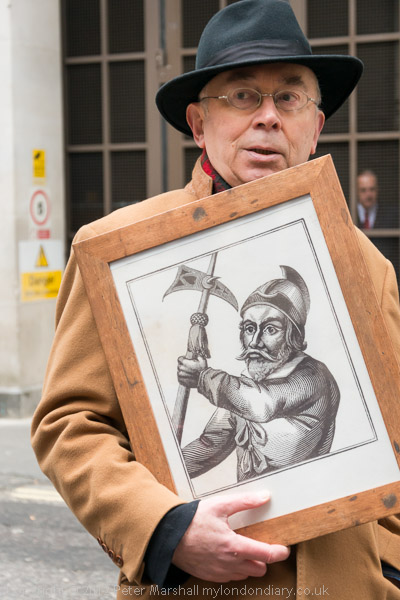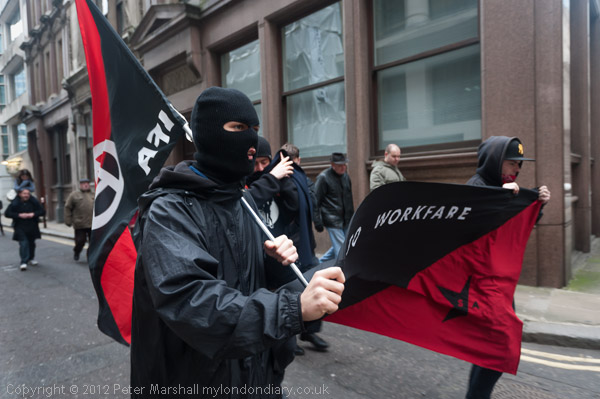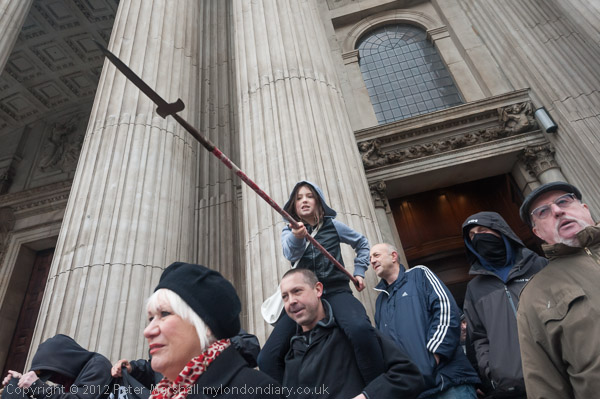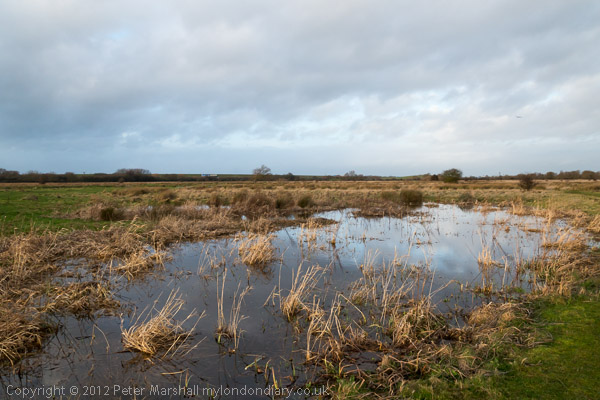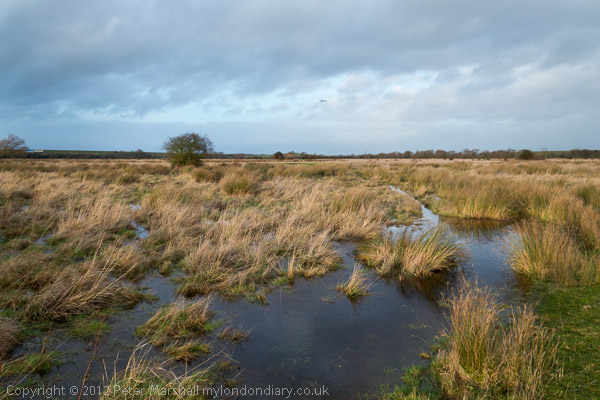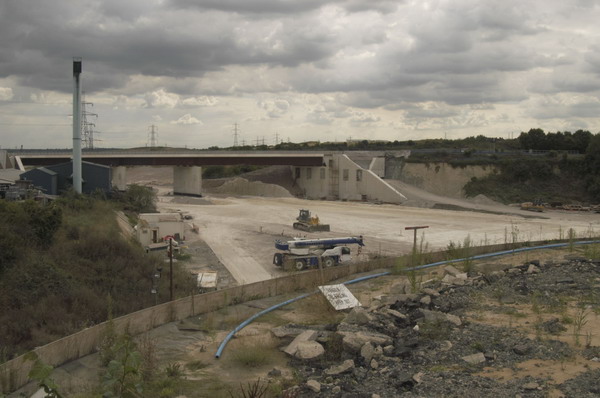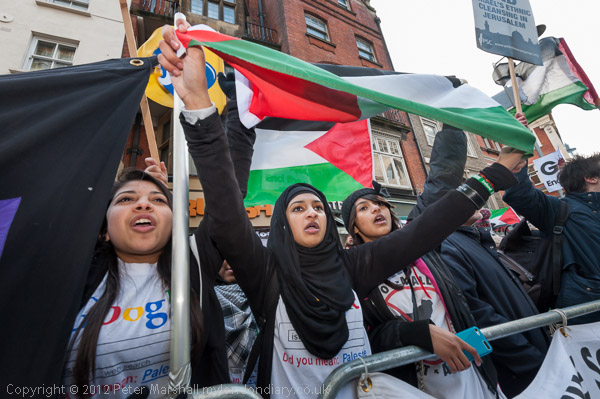Here is another picture of the ring of candles at the protest against the Delhi Gang Rape outside the Indian High Commission in London.
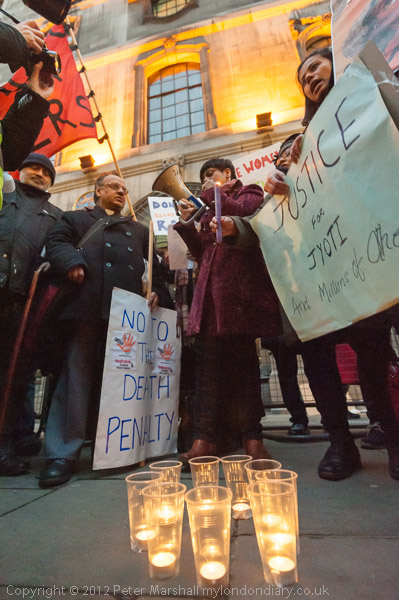
Its always difficult to know how bright to make night images; I think visually the impression was of a darker scene than this, and I’ve perhaps taken too much care to get separation in the shadow areas. It would be more dramatic a little darker, especially at the bottom of the frame.
Automatic exposure tends to make night scenes too bright, but this was a little underexposed even though I was using +1/3 stop of extra exposure. Possibly the light sources – the 8 candles – actually in the picture were to blame, and working at 16mm focal length I was quite close to them. I was at the centre of a fairly tightly packed crowd and couldn’t move back at all. This was one of the first pictures I took of the ring of candles and I started by trying to work closer still and low, but the the candles didn’t really look like a circle, and the picture in my previous post, taken from around waist level, shows that better.
Either might have been a better picture with the 10.5mm semi-fisheye, which would also have let me take the scene in landscape format, but although using this would have given more of the circle of the crowd around the candles, it would also have included several other photographers and cameras. There really were far too many people trying to take pictures. I had to ask another photographer to pull back his camera strap to make these pictures.
Using flash would have ruined the effect of the candles, and people were moving quite a lot as they shouted slogans, so to try and avoid subject movement I was working using Shutter priority with a shutter speed of around 1/100s. The ISO was set at 3200 and I probably needed an aperture of around f2 but the lens has a full aperture of only f4. So the camera can’t do it, and I got a couple of stops of underexposure – despite the EXIF data telling me I actually had exposure compensation of +.3 stops. Of course the viewfinder display does indicate the underexposure, but in these situations the best thing to do is to actually take the picture and look at it (and the histogram) on the rear screen.
I don’t do a lot of chimping – it disturbs the flow of my work – but it really is essential to check on things like this that the histogram comes down more or less to zero in the shadow areas – and also that you are not getting significant highlight clipping. Then you know that you can adjust things as necessary in Lightroom. I think I have lost a tiny bit of insignificant detail in the candle flames – which could not be recovered with burning in as it wasn’t recorded.
These two pictures, taken within a few seconds of each other from an almost identical position show the advantages and disadvantages of using flash. The upper image was with the 16-35mm on the D700 and the lower with the DX 18-105mm on the D800. I only take a single flash unit and it was on the D800 at the time.
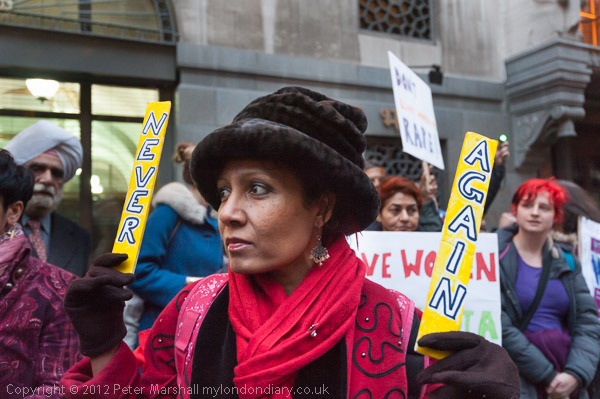
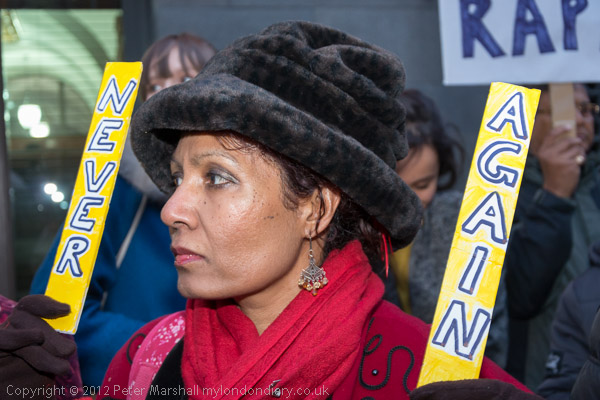
The flash does make this woman and her two signs reading ‘Never Again‘ stand out more, but I much prefer the image using available light.
But there is a problem with working with available light at events like this with a lot of photographers present, and one that ruined quite a few pictures (you can just see it on a couple of others in the set on My London Diary.) Here’s one that shows it but where I thought the effect was interesting.
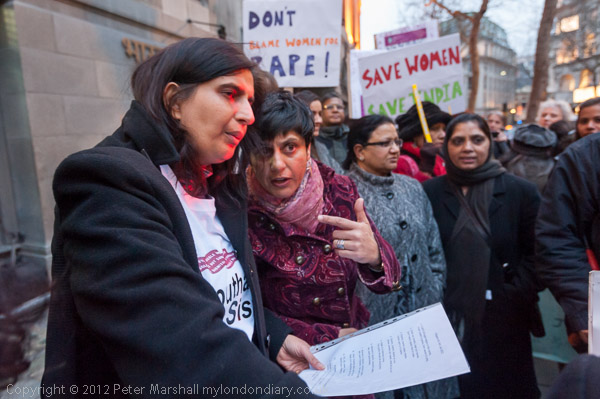
That red light on the closer woman’s face, a little spilling on to her t-shirt – is another photographer focussing. You seldom notice this if using flash, as the intensity of the flash overpowers the focus light pattern. But it really is a problem at busy events such as these, and there must be better ways to improve focus in low light that camera designers could think up rather than this.
There were areas where the available light just wasn’t enough to work with, and I’ve been experimenting with ways around this – but that’s something I’ll look at in a later post.
________________________________________________________
My London Diary : Buildings of London : River Lea/Lee Valley : London’s Industrial Heritage
All photographs on this and my other sites, unless otherwise stated are by Peter Marshall and are available for reproduction or can be bought as prints.
To order prints or reproduce images
________________________________________________________
